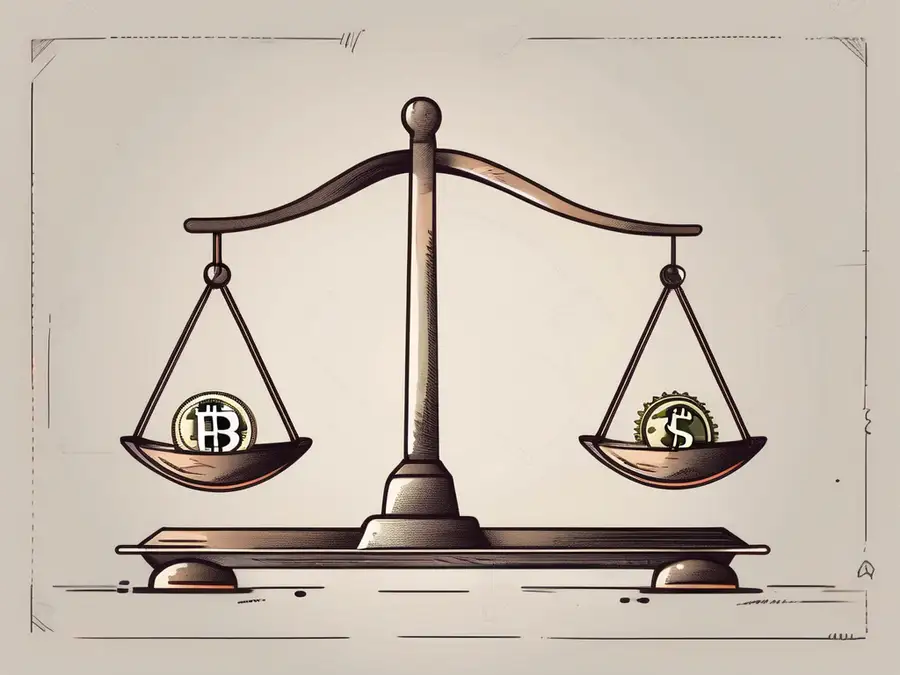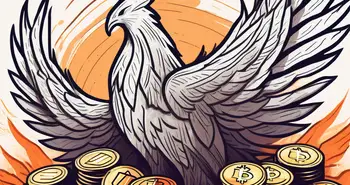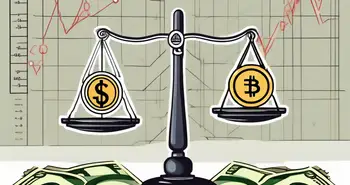The Significance of Currency Pegs: Types, Benefits, and Drawbacks

As an expert on global economics, I understand the significance of a currency peg and its impact on the stability of economies around the world. In this article, I will delve into the concept of a currency peg, its role in the global economy, its advantages and disadvantages, the process of implementing one, and more. So, let's dive in and explore the importance of a currency peg.
Understanding the Concept of a Currency Peg
At its core, a currency peg refers to a fixed exchange rate system in which a country's currency is directly tied to another currency, a basket of currencies, or a predetermined value, such as gold. This fixed rate is maintained either through government intervention or by an agreement with other countries. The aim of a currency peg is to stabilize exchange rates and promote economic growth.
Definition and Basic Principles
In simple terms, a currency peg is like attaching your currency to another currency, ensuring that its value remains relatively stable. It provides a sense of predictability in international trade, allowing businesses and investors to plan and execute transactions with confidence. This stability helps foster economic growth and confidence in the country's monetary system.
For example, let's consider a hypothetical scenario where Country A decides to peg its currency, the A-dollar, to the United States dollar. This means that the exchange rate between the A-dollar and the US dollar will remain constant. If 1 A-dollar is pegged to 1 US dollar, the value of the A-dollar will always be equivalent to the US dollar.
However, it is important to note that maintaining a currency peg is not without challenges. One of the main challenges is the need for constant monitoring and intervention by the central bank or government to ensure that the peg remains intact. This can involve buying or selling foreign currency reserves to maintain the desired exchange rate. Additionally, changes in economic conditions, such as inflation or changes in interest rates, can put pressure on the currency peg and require adjustments to be made.
Types of Currency Pegs
There are various types of currency pegs, each with its own characteristics and implications.
1. Fixed Exchange Rate Peg: In this type, a country fixes the value of its currency against a single foreign currency. For instance, a country might peg its currency to the US dollar or the euro. This type of peg provides a high level of stability and predictability, as the exchange rate remains constant.
2. Basket Peg: Here, a country attaches its currency to a weighted average value of multiple foreign currencies. This approach helps diversify risks associated with being solely tied to a single currency. By pegging to a basket of currencies, a country can reduce its vulnerability to fluctuations in any one currency.
3. Crawling Peg: This type of peg involves periodically adjusting the exchange rate within a certain range to accommodate changing economic conditions. It allows for flexibility while maintaining a certain level of stability. The adjustments are typically based on a set of predetermined criteria, such as inflation rates or trade balances.
4. Peg to Gold: In this historical approach, a country fixes the value of its currency to a specific amount of gold, aiming to ensure the stability and convertibility of the currency. This type of peg was commonly used in the past when the gold standard was prevalent. However, it is less common in today's modern monetary systems.
Overall, currency pegs play a crucial role in international trade and economic stability. They provide a framework for countries to manage their exchange rates and promote confidence in their monetary systems. However, it is important to carefully consider the implications and challenges associated with maintaining a currency peg, as they require constant monitoring and adjustment to adapt to changing economic conditions.
The Role of Currency Peg in the Global Economy
A currency peg plays a crucial role in the global economy by providing stability and promoting trade and investment. Let's explore these key aspects further.
Stabilizing Exchange Rates
One of the primary benefits of a currency peg is the stabilization of exchange rates. Fluctuating exchange rates can create uncertainty and volatility, complicating international trade and investment. By fixing the exchange rate, a currency peg provides a reliable framework for businesses to plan and expand their operations across borders.
Promoting Trade and Investment
When exchange rates are stable, businesses can more accurately assess their costs and profits, making international trade and investment more attractive. A currency peg facilitates smoother trade relationships between countries, reducing currency risks and encouraging long-term economic cooperation.
The Importance of Currency Pegs in Forex
Currency pegs have a significant impact on the foreign exchange (forex) market, influencing trading strategies and market stability.
Providing Stability in Forex Markets
In the forex market, stability is crucial for traders who need predictable exchange rates to make informed decisions. A currency peg ensures that the pegged currency maintains a stable value against the anchor currency, reducing the risk of sudden and unpredictable currency fluctuations. This stability can be particularly attractive to investors and businesses engaged in international trade.
Enhancing Trader Confidence
A stable exchange rate provided by a currency peg enhances trader confidence. Traders can enter and exit positions with greater certainty about the value of the pegged currency, allowing for more precise forecasting and risk management. This confidence encourages higher trading volumes and liquidity in the forex market.
Impact on Forex Trading Strategies
Forex traders often develop strategies based on the stability and predictability of pegged currencies. For instance, traders might engage in carry trade strategies, where they borrow money in a currency with low interest rates and invest in a currency with higher rates. A stable peg provides a predictable environment for these strategies to succeed, as traders can rely on consistent exchange rates.
Advantages of a Currency Peg
The advantages of implementing a currency peg extend beyond stability. Let's take a closer look.
Predictability in International Trade
A currency peg brings predictability to international trade. Businesses can rely on stable exchange rates, which allows for accurate pricing of goods and services. This predictability fosters trust and confidence among trading partners, creating an environment conducive to growth.
Control Over Inflation Rates
By fixing the exchange rate, a currency peg limits the influence of market forces on a country's inflation rates. This can be particularly beneficial for economies struggling with higher inflation rates, as it provides a mechanism to curb inflation and maintain price stability.
Disadvantages and Risks of a Currency Peg
While a currency peg offers advantages, it is not without its downsides. Understanding these risks is crucial in evaluating the appropriateness of implementing a currency peg.
Limited Monetary Policy Independence
When a country pegs its currency, it restricts its ability to pursue independent monetary policies. The country's central bank loses flexibility in adjusting interest rates and implementing other monetary measures, as these can directly affect the exchange rate. This limited policy independence can pose challenges during economic downturns or inflationary pressures.
Potential for Economic Crises
In certain scenarios, maintaining a currency peg can lead to economic crises. If the pegged currency faces significant devaluation or depreciation, it can result in severe consequences for the country's economy. The fixed exchange rate may become unsustainable, causing disruptions in trade and sparking financial instability.
The Process of Implementing a Currency Peg
Implementing a currency peg requires careful considerations and a well-thought-out process. Let's examine the key steps involved.
Choosing the Peg Currency
The first step is selecting the currency to which the domestic currency will be pegged. This decision depends on various factors, such as the country's trade relationships, economic stability, and the currency's credibility in international markets. A thorough analysis of the pros and cons of potential peg currencies is essential.
Maintaining the Peg
Once the currency peg is established, it is crucial to have mechanisms in place to maintain it. This involves regular monitoring, intervention by the central bank, and potential adjustments if economic conditions warrant them. A strong commitment to maintaining the peg is vital to uphold stability and confidence.
As an expert in the field of global economics, I have personally witnessed the impact of currency pegs on countries and their economies. From my experience, I can confidently say that countries should carefully evaluate the advantages and disadvantages of implementing a currency peg before committing to it. It is essential to consider the unique circumstances of the economy, the potential risks involved, and the long-term sustainability of the peg.
FAQ
Let's revisit the main points covered in this article through some frequently asked questions.
What is a currency peg?
A currency peg refers to a fixed exchange rate system in which a country's currency is directly tied to another currency or a predetermined value.
How does a currency peg stabilize exchange rates?
By fixing the exchange rate, a currency peg provides stability and predictability, reducing volatility and uncertainties related to currency fluctuations.
What are the advantages of a currency peg?
A currency peg offers predictability in international trade and control over inflation rates, promoting economic growth and fostering trust among traders.
What are the risks associated with a currency peg?
Implementing a currency peg can limit a country's monetary policy independence and, in certain circumstances, lead to economic crises if the currency becomes unsustainable.
What is involved in implementing a currency peg?
The process of implementing a currency peg includes carefully choosing the peg currency and establishing mechanisms to maintain the peg through regular monitoring and potential adjustments.
By understanding the importance of a currency peg and its implications on global economies, policymakers and individuals alike can navigate the complexities of the international economic landscape with greater confidence.
Understanding the intricacies of currency pegs and their impact on global economics is just the beginning. With Morpher, you can take your newfound knowledge and apply it to a revolutionary trading experience. Embrace the power of blockchain technology and benefit from zero fees, infinite liquidity, and the ability to trade a wide array of assets, from forex to unconventional markets. Whether you're looking to invest fractionally, short sell without interest fees, or leverage your trades, Morpher provides a safe, innovative platform that puts you in control. Ready to transform your trading journey? Sign Up and Get Your Free Sign Up Bonus today, and join the future of investing with Morpher.

Disclaimer: All investments involve risk, and the past performance of a security, industry, sector, market, financial product, trading strategy, or individual’s trading does not guarantee future results or returns. Investors are fully responsible for any investment decisions they make. Such decisions should be based solely on an evaluation of their financial circumstances, investment objectives, risk tolerance, and liquidity needs. This post does not constitute investment advice.

Painless trading for everyone
Hundreds of markets all in one place - Apple, Bitcoin, Gold, Watches, NFTs, Sneakers and so much more.

Painless trading for everyone
Hundreds of markets all in one place - Apple, Bitcoin, Gold, Watches, NFTs, Sneakers and so much more.









